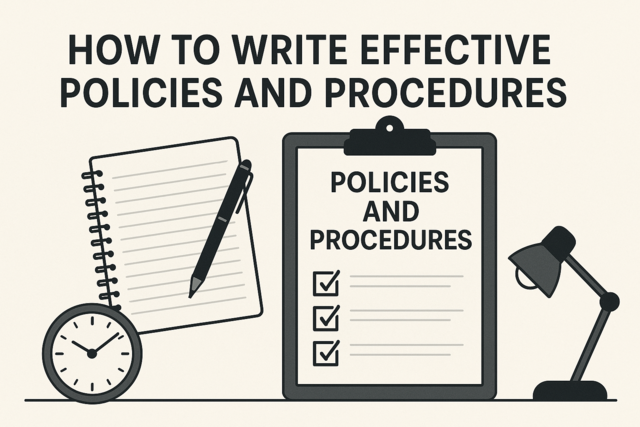A class on adverbs of frequency is a class that students really take to, since it involves talking about themselves, their activities, and their daily life while also learning the same about the other students. Students can really get into the topic of what they do and how often they do it.
The lesson plan presented below is a beginner lesson which is a perfect follow-up to a classroom lesson on the present simple, since it's another present simple class that includes adverbs of frequency.
This brings up an important subject for English teachers: how fast to bring along your students and knowing when to move on to the next subject, or whether to revise the subject in the next classroom lesson or a later classroom lesson.
If you're following a textbook, it's natural to do the chapters in order.
But sometimes you can hit a sticking point when students don't seem to have grasped the most recent lesson, or when the opposite happens and students seem bored by lessons that are going too slow for them.
In this case, you need to evaluate your class and decide whether to slow down or speed up.
A teacher need to do constant evaluation, both during the classes in general and especially at the end of an individual classroom lesson. At the end of a classroom lesson, you'll have to ask yourself:
How well did the students perform during the Production? If they didn't do so well, was it because the subject is hard, or were the exercises not enough? Am I going too fast, or too slow?
These are the kinds of things teachers have to keep in mind. The good news is that this will become easier as you become more and more experienced.
Giving and checking homework is another way to see if your students are ready for the next lesson. If an individual student didn't do well, you might just help that student specifically. If much of the class didn't do well, you should plan another class on the subject or an extensive homework assignment that will help them both learn the key concept and practice in exercises.
You can also incorporate this evaluation into the beginning of a class. For example, if the last class was on the present simple, you briefly ask students questions like "Do you like this weather? Are you ready today? Do you drive to class every day?"
If the last class was about the simple past tense, you can briefly ask each one, "What did you do last weekend? What did you do this morning? What time did you get to school today?"
If you meet a lot of confusion or grammatically incorrect answers, make a note of it and reintroduce the previous target language in a class soon after.
On the other hand, you might notice many students offering answers that show they have skills beyond what you are teaching them.
Maybe you've only taught simple past, but when you ask them "what did you last weekend?", they all say something like "I was swimming all day" and "I was going to play football but instead I went to the movies." These answers, using more complicated grammar than you have been teaching, indicate that you might consider accelerating the pace of your course.
This is relevant to the lesson plan we will be exploring today.
Adverbs of frequency
Sometimes adverbs of frequency are introduced in a simpler way than in this lesson plan described below. A preliminary class on adverbs of frequency would first cover questions and answer like:
Do you drink coffee?
Yes, I always drink coffee.
Then a continuation class would cover the more complicated questions like:
How often do you drink coffee?
Both forms of the frequency questions above can be included in a single class for students that are of the level or ability to handle it. Otherwise, you might want to separate the two forms and teach them in separate classes
Different kinds of beginners
This brings us to the ESL terms absolute beginners versus false beginners. Absolute beginners are truly new to English and don't know simple vocabulary like the numbers 1-10 and have trouble answering when asked "How are you?"
A false beginner is a student that tests as a beginner but has some grounding in English.
So again, the lesson plan presented below is one that includes both forms of the frequency question listed above. It would be up to your judgment as a teacher whether to start with a simpler lesson and follow up with this one, or jump right in with this slightly more complicated lesson.
A lesson plan for teaching adverbs of frequency
Class Objectives:
-To understand a text in the present simple tense
-To learn frequency adverbs and how to ask questions in the present simple tense
-To ask and answer questions about frequency in the present simple tense
-Vocabulary: to wake up, to go to bed, to do the shopping, to take a bus, to play a sport, to exercise, a magazine
Presentation
This is the vocabulary to present:
to go to bed a weekend
to wake up a magazine
to take a bus
to do the shopping
to play (a sport)
to exercise
"To wake up" is a phrasal verb (a two-part verb consisting of a verb and another word like up or in), a concept many students find difficult. A class on phrasal verbs is taught separately later (we will cover the teaching of phrasal verbs in Lesson 8) but common phrasal verbs like "to wake up" can be introduced before the phrasal verb class.
In this case, you can practice your acting skills while teaching "to go to bed" and "to wake up" by acting both out. Or use drawings/photos of each one to complement your acting. Students will be entertained, and so more open to learning, if you act out "to wake up" in an exaggerated fashion.
In detail, you can elicit by saying "What is it?" and then closing your eyes, pretending you are sleeping by tilting your head to the side (and maybe adding a snore!) Then suddenly jerk your eyes open and look around surprised. If no one offers "to wake up", quickly offer "to wake up" and have them repeat as a class.
If someone does guess it in some form, repeat the full infinitive for "to wake up" and proceed with methods of presentation that we have learned (having the students repeat as a group, as individuals, boardwork, students writing it down, and then confirming they understand the word by asking questions like "Do you wake up at 6? Do you wake up at 7?")
After you have presented the vocabulary, it's time to present the adverbs.
Notice in all the following the parts in bold that you would indicate on the board with colors or underlining to reinforce the student's previous work on the simple present.
You would follow the presentation methods we have covered to present the following forms related to adverbs of frequency
Using the "percentage" method is a good technique for presenting adverbs. It looks like this:
Frequency Adverbs
100% I always work on Saturday.
80% You usually work on Saturday.
70% He / She often works on Saturday.
50% They sometimes work on Saturday.
30% Mary occasionally works on Saturday.
10% John rarely works on Saturday.
0% Mike never work on Saturday.
Then move on to the questions related to frequency adverbs:
Questions
Do I work? How often do I work? I always work.
Do you work? How often do you work? You rarely work.
Does he work? How often does he work? He sometimes works.
Does she work? How often does she work? She usually works.
Does it sleep? How often does it sleep? It never sleeps.
Do we travel? How often do we travel? We occasionally travel.
Do you travel? How often do you travel? You often travel.
Do they travel? How often do they travel? They never travel.
And then the negative answers, which reinforces their learning of the present simple:
Negative answers. (No.)
I don't play sports
You don't work
He doesn't work
She doesn't play football
It doesn't sleep
We don't play tennis.
You don't travel
They don't play tennis
Tip: Next to "It doesn't sleep" you can draw a picture of a fish as an example of an "it" that does not sleep.
Practice
You will notice quite a few practice exercises. Most of them are short and these should be run through quickly.
Also notice that some there are written exercises about the third person (he always., she never. etc.) but the final Production is only first and second person (how often do you.? and "I never." etc.) This is because the lesson plan is one part of several lessons in both frequency adverbs and the simple present. In following classroom lessons, they would practice saying "he always. and she never. etc.)
Introduce this first activity in the ways we have covered, showing the exercise, pointing to "have breakfast," saying "I always have breakfast," showing where to put the "X", etc
Practice 1:
Place an X next to the activity to say how often you do each of these activities.
always often usually sometimes occasionally rarely never
have breakfast
drive to work
study
work late
play tennis
exercise
read magazines
drink coffee
drink beer
go to the movies
watch TV
drink wine
wake up early
Practice 2: Tell us how often you do these activities.
For this exercise, call on an individual student, and ask: How often do you have breakfast? Encourage, if necessary, the full sentence answer. For example, "I never have breakfast." Have one student answer one question about one activity, and then go to the next activity with the next student. You can keep going, calling on the first student again with a different question.
Practice 3: Asking and answering in open pairs
Start by having the class repeat "How often do you.?" Refer to the sentence on the board. After a few repetitions, start again with full questions. "How often do you have breakfast?" Do this for several of the activities.
Then pick an open pair. Have the first student refer to her exercise handout and say the question using "have breakfast." Model the question and have the student repeat if necessary. Indicate for the second student to answer. Indicate for the first student to ask the next question on the handout, and the second student to answer. Then have them switch roles for asking and answering.
Do this with open pairs several times to include all the students.
Practice 4. Reading and making questions.
Give the students the handout. Show them the text and show them the exercise below it. Say "Read, and write four questions and four answers about Maria."
John asks Maria about a typical day.
John Do you always wake up at 6:30 am?
Maria No, I don't. I sometimes wake up at 8:00 am on the weekend*.
John Do you drive to work?
Maria I usually drive to work, but occasionally I take the bus.
John Do you work late?
Maria I sometimes work until 6:00 pm. I never work until 8:00 pm.
John Do you exercise or play sports?
Maria I often play tennis on Wednesday evenings.
John Do you go to bed early?
Maria I rarely go to bed before 11:00 pm.
Write 4 questions about Maria's daily routine.
Example: How often does Mary work late?
1.
2.
3.
4.
Write answers to the above questions.
1.
2.
3.
4.
Have students read their questions and answers aloud by picking one student at a time and saying "one" and then a new student and saying "two" etc. You can keep going and start again at "one" with a new student until all the students have a chance to read the questions and answers to most or all of the questions.
Production
Put the students into pairs and have ask each other questions about their daily life, habits, etc. Encourage free conversation using these kinds of questions. Use the first handout to get their conversation started.
If the pairs start to run out of questions and conversation, make all new closed pairs and have them start over with a new partner.






















